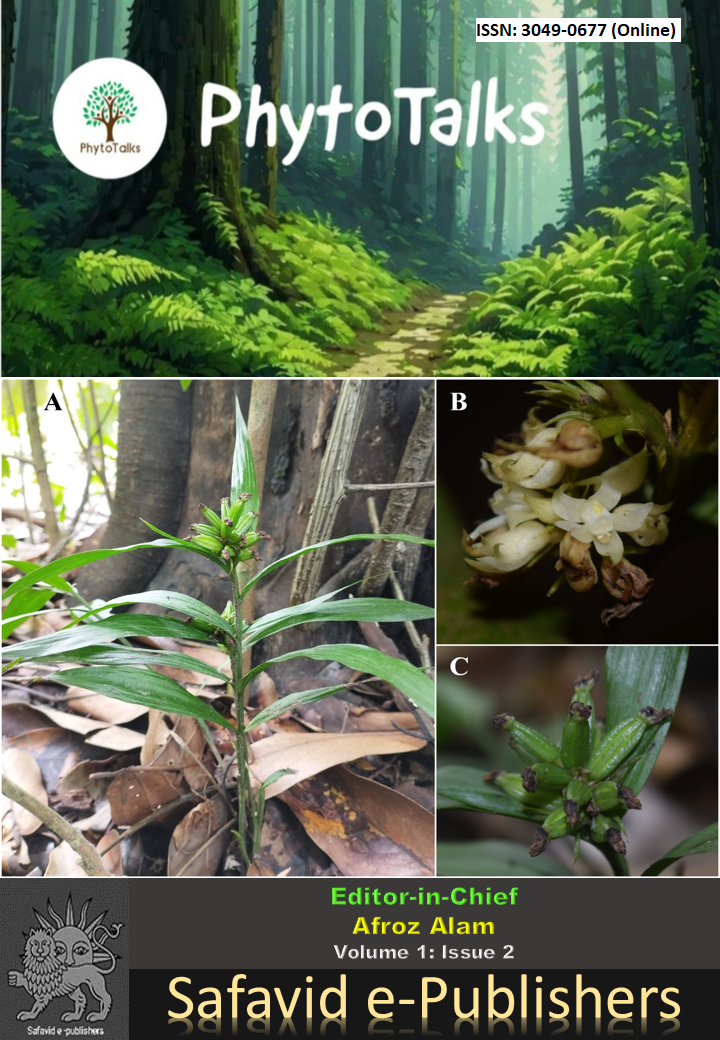Challenges and Opportunities in Conserving Grassland Ecosystems of Western Himalayan region.
Grassland Ecosystem of Western Himalayan region
DOI:
https://doi.org/10.21276/pt.2024.1.2.7Keywords:
Alpine meadows, Biodiversity, Conservation, Cyperaceae, Poaceae, Uttarakhand, ThreatsAbstract
Grasslands are delineated as terrestrial ecosystems principally distinguished by predominantly herbaceous flora devoid of shrubbery, and their persistence hinges upon mechanisms such as combustion, herbivore browsing, harvesting, arid conditions, and exposure to sub-zero temperatures. The primary plant families encountered in grassland ecosystems include family Poaceae, Cyperaceae, Fabaceae, and Asteraceae. In India, there are different types of grasslands observed, but in the Western Himalayan region, Cool temperate grassy slopes grasslands, Sub-alpine meadows grasslands, Alpine meadows and Steppe formations of trans-Himalaya grasslands predominantly prevail. Furthermore, the grasslands are primarily inhabited by small herbs, which directly or indirectly hold immense importance in the lives of local communities. The Western Himalayan stands as one of the most recent and dynamically evolving mountain ranges globally, marked by both activity and vulnerability. They confront human-induced challenges in the pursuit of development. Grassland communities are encountering numerous threats due to significant human activities, including land degradation, intense grazing, habitat fragmentation, invasive species, and, to some extent, the impact of climate change. These factors are contributing to the decline of grasslands and a decrease in species diversity. Preserving grasslands necessitates a comprehensive approach encompassing a variety of tactics. Diverse conservation strategies are needed for the management of various grassland types. The mid-elevation grasslands, especially the meadows used for hay production, are preserved through the control of livestock grazing and controlled burning during the winter season. While several government departments are active in different grassland regions, focusing on habitat restoration and eco-development, their collective efforts are directed towards preserving these distinctive habitats.
References
1. Chandran M. Grassland vegetation of India: An update. Ecology and Management of Grassland Habitats in India, ENVIS Bulletin: Wildlife & Protected Areas, Wildlife Institute of India, Dehradun, India, 2015; 17.
Henwood WD. (1998). An overview of protected areas in the temperate grasslands biome. Parks, 1998; 8(3), 3-8.
Dabadghao PM, Shankarnarayan, KA. The grass cover of India. The grass cover of India. Indian Council of Agricultural Research. 1973; xii, pp. 713.
Tali BA, Khuroo AA, Nawchoo IA, Ganie AH. Prioritizing conservation of medicinal flora in the Himalayan biodiversity hotspot: an integrated ecological and socioeconomic approach. Environ Conser. 2019; 46(2): 147-154.
Uniyal SK, Awasthi A, Rawat GS. Traditional and ethnobotanical uses of plants in Bhagirathi valley (western Himalaya). Indian J Tradit Knowl. 2002; 1(1): 7-19.
Madhusudan MD, Vanak AT. Mapping the distribution and extent of India's semi‐arid open natural ecosystems. J Biogeogr. 2023; 50(8): 1377-1387.
Lahiri S, Roy A, Fleischman F. Grassland conservation and restoration in India: A governance crisis. Restor Ecol. 2022; 31: 1-26. http://dx.doi.org/10.1111/rec.13858
Fleischman FD. Why do foresters plant trees? Testing theories of bureaucratic decision-making in central India. World Development. 2014; 62: 62-74.
Milchunas DG, Lauenroth WK, Chapman PL, et al. Effects of grazing, topography, and precipitation on the structure of a semiarid grassland. Vegetatio. 1989: 80:11–23. https://doi.org/10.1007/BF00049137
Coetzee JA, Page MI, Meredith, D. Root studies in bighveld grassland communities. S Afr J Sci. 1946; 42(6):105-118.
Conway A. Effect of grazing management on beef production: II. Comparison of three stocking rates under two systems of grazing. Irish J Agri Res. 1963; 243-258.
Maheshwari JK. The Grass Cover of India. Nelumbo, 2024; 14(1-4), 193–193. https://doi.org/10.20324/nelumbo/v14/1972/75315
Kuniyal JC, Maiti P, Kumar S, Kumar A, Bisht N, Sekar KC, Nand M. Dayara bugyal restoration model in the alpine and subalpine region of the Central Himalaya: a step toward minimizing the impacts. Sci Rep. 2021; 11(1): 16547. https://doi.org/10.1038/s41598-021-95472-y
Lahiri S, Roy A, Fleischman, F. Grassland conservation and restoration in India: A governance crisis. Restor Ecol. 2023; 31(4), e13858. https://doi.org/10.1111/rec.13858
Downloads
Published
Versions
- 2025-01-29 (3)
- 2024-09-26 (2)
- 2024-07-30 (1)
Issue
Section
License
Copyright (c) 2024 PhytoTalks

This work is licensed under a Creative Commons Attribution-NonCommercial 4.0 International License.
Copyright and License Terms
Authors who publish with this journal agree to the following terms:
- Authors retain the copyright to their work and grant the journal the right of first publication. The work is simultaneously licensed under a Creative Commons Attribution License permitting others to share it with proper acknowledgement of the authorship and its original publication in this journal.
- Authors may enter into additional, non-exclusive agreements for distributing the published version of their work (e.g., depositing it in an institutional repository or including it in a book), provided they acknowledge that the work was first published in this journal.
Open Access Policy
License
PhytoTalks is an open-access journal, allowing readers to access all published articles without registration. All articles are distributed under the Creative Commons Attribution License (CC Attribution 4.0), which permits unrestricted use, distribution, and reproduction in any medium, provided the original author and source are properly credited. (https://creativecommons.org/licenses/by/4.0/).
License summary:
This license allows others to:
-
Share — copy and redistribute the material in any medium or format
-
Adapt — remix, transform, and build upon the material for any purpose, even commercially
Under the following terms: -
Attribution — appropriate credit must be given, a link to the license provided, and indication if changes were made.
Author Warranties
By submitting a manuscript to PhytoTalks, authors confirm that:
-
The work is original and does not infringe any copyright, trademark, patent, or other rights of third parties.
-
The work has not been published elsewhere (except as a preprint) and is not under consideration by another publication.
-
All necessary permissions for any third-party materials used in the manuscript have been obtained.
Citation Policy
When using or citing articles from PhytoTalks, proper attribution must be given to the original authors and the source, including a DOI link where available.


![Announcement: Special Conference Issue of Phytotalks We are pleased to announce that Phytotalks will publish a special issue featuring select peer-reviewed papers from the Third International Conference on Plant Functional Biology, an esteemed international gathering of experts in Plant Science]. This special issue will highlight cutting-edge research and innovative developments presented at the conference, offering our readers valuable insights into the latest advancements in the field. Stay tuned for this upcoming edition, which reflects our continued commitment to showcasing high-quality, impactful research.](https://phytotalks.com/public/site/images/afrozalam/img-20250701-wa0010.jpg)



































